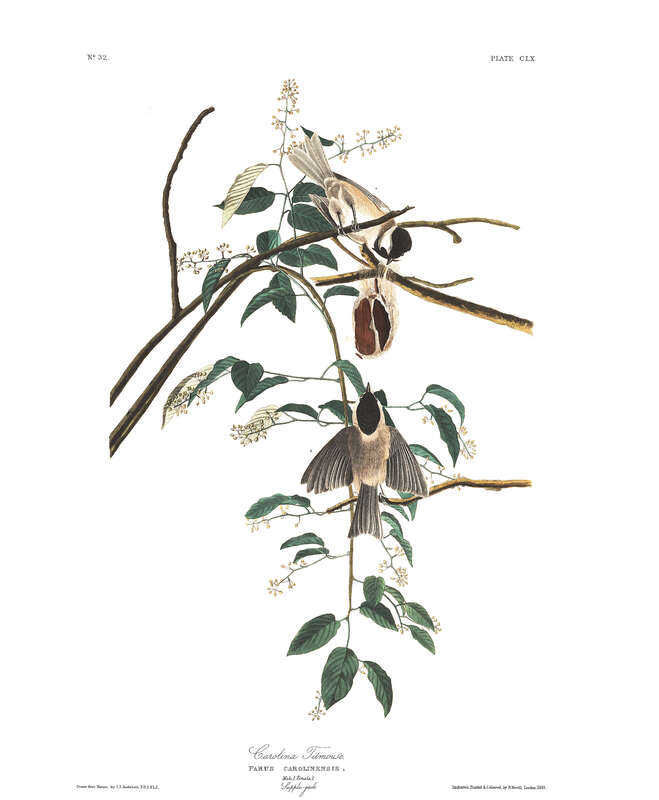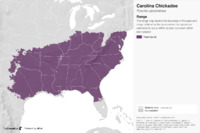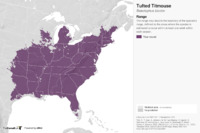Chickadees and Titmice
Birds in the Paridae family are characterized by their short-to-medium length rounded wings, long toes, and short, stout beaks. They are usually gray, black, white, brown, and yellow and have little to no sexual dimorphism (males and females look the same). They eat insects and seeds and can be found in forests and fields. They can be found in North America, Asia, Africa, and Europe.
Included below are the Carolina Chickadee and the Tufted Titmouse.
Carolina Chickadee
Poecile carolinensis
Habitat: Mixed and deciduous woods, river groves, shade trees.
Preferred Food: Mostly insects, seeds, and berries. Feeds mainly on vegetation in winter and insects (especially caterpillars) in summer.
Fun Fact: Where the two species ranges come in contact, the Carolina and Black-capped chickadees occasionally hybridize. Hybrids can sing the songs of either species, or might sing something intermediate.
Tufted Titmouse
Baeolophus bicolor
Habitat: Mostly in deciduous forest with tall trees, sometimes in mixed forest. Can live in orchards, suburbs, or even city parks if trees are large enough.
Preferred Food: Mostly insects and seeds, with insects making up the majority of their summer diet and seeds making up most of their winter diet.
Fun Fact: Tufted Titmice are one of just a few perching birds that can use their feet to hold seeds while they break them open.



